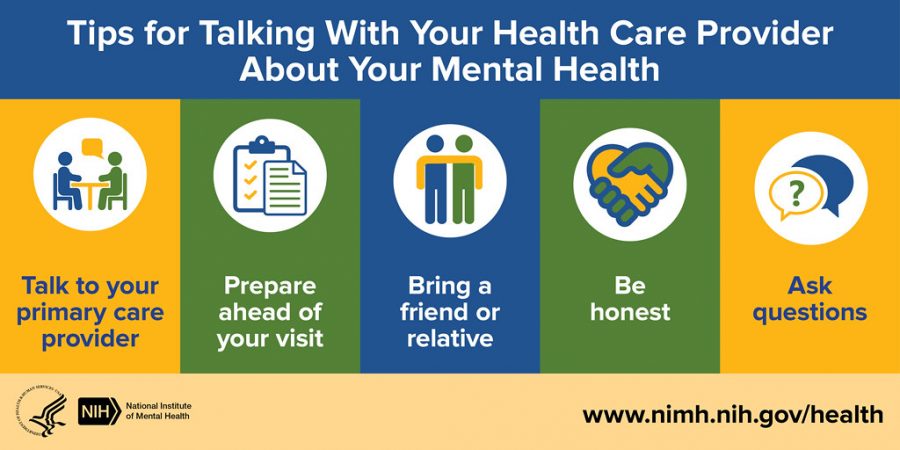Counselors Urge Finding a Healthy Balance
Resources are available to students who are struggling. Counselors urged reaching out during the pandemic to help navigate challenges.
October 21, 2020
During this season of uncertainty and confusion, mental health can often go unnoticed. Quarantine and virtual learning can have a definite impact on student’s mental health, mainly because students are at home all day stuck doing school on the computer with little to no social interaction. This isolation can cause a huge decline in mental health for a significant number of students.
Senior Danielle Davis says that quarantine has definitely had a negative effect on her mental health. According to Davis, she often “feels very alone and disconnected from life and people.” She noticed that the problem started during quarantine, when she experienced loneliness and struggling with depression. She said she felt she is losing a lot of her friends. Danielle wishes that counselors were able to do more to help us out during this hard time.
According to Mrs. Michel, senior counselor, communicating with students virtually is more difficult than in person. She thinks that could be because “chatting via zoom seems a little less personal than in the office.” She also points out that counseling students is harder because “some of the body language cues that I might see in the office can be missed when chatting online.”
Mrs. Michel wants students to know that all of the school counselors have a zoom room that is set up throughout the school week that students can access anytime they need to chat. These can be accessed by clicking on the “See Your Counselor” on the high school counseling website. Outside of the school day, students can contact behavioral health response for assistance during a mental health crisis at 314-468-6644 or 800-811-4760. The phone lines are operated by mental health professionals 24 hours a day, 365 days a week and the services are free of charge.
Mrs. Michel explains that not everyone might be aware of the resources that we have at Pattonville. One resource that we offer through Pattonville is free counseling through the Youth In Need (YIN). Once everything has been set up, the YIN counselor will typically work with students once a week or every other week. Ms. Michel says, “There is limited space, but if students are interested in this, they can speak to their school counselor about it.”
PHS teacher Mrs. Dornfeld says that she will put her students in touch with their counselors who are trained to support students and their mental health. At least two of our counselors at Pattonville are trained crisis counselors. Mrs. Dornfeld says they also have connections to various supports within the Pattonville community like social workers and psychologists and sometimes SSD (special school district) case managers who may help families navigate community resources to support their students. If a student is struggling with a mental health issue there are multiple resources that we have access to as a student at PHS. Mrs. Dornfeld says there are outside resources like KUTO (kids under twenty-one) and mental health groups available to students and families like West County Psychological Associates who do workshops and individual counseling.
Mrs. Dornfeld has done a lot of what she tries to do in-person. She tries to create a routine so that students know what to expect. She gives directions multiple ways and in Canvas she has made multiple ways that students can access assignments (home page, modules, and in weekly agendas with links.) More importantly, she has taken some time during class to try and get to know more about my students and for them to learn about each other and build a learning community to feel connected to each other and their teacher. On average, she spends about 70 hours a week on school stuff to try and support her students learning as much as possible.
From students to counselors to teachers, the school community is working to try to make distance learning work and to make the best of a difficult situation. Students who are struggling should reach out; often someone can point them to the resources and help that they need while learning at home.

